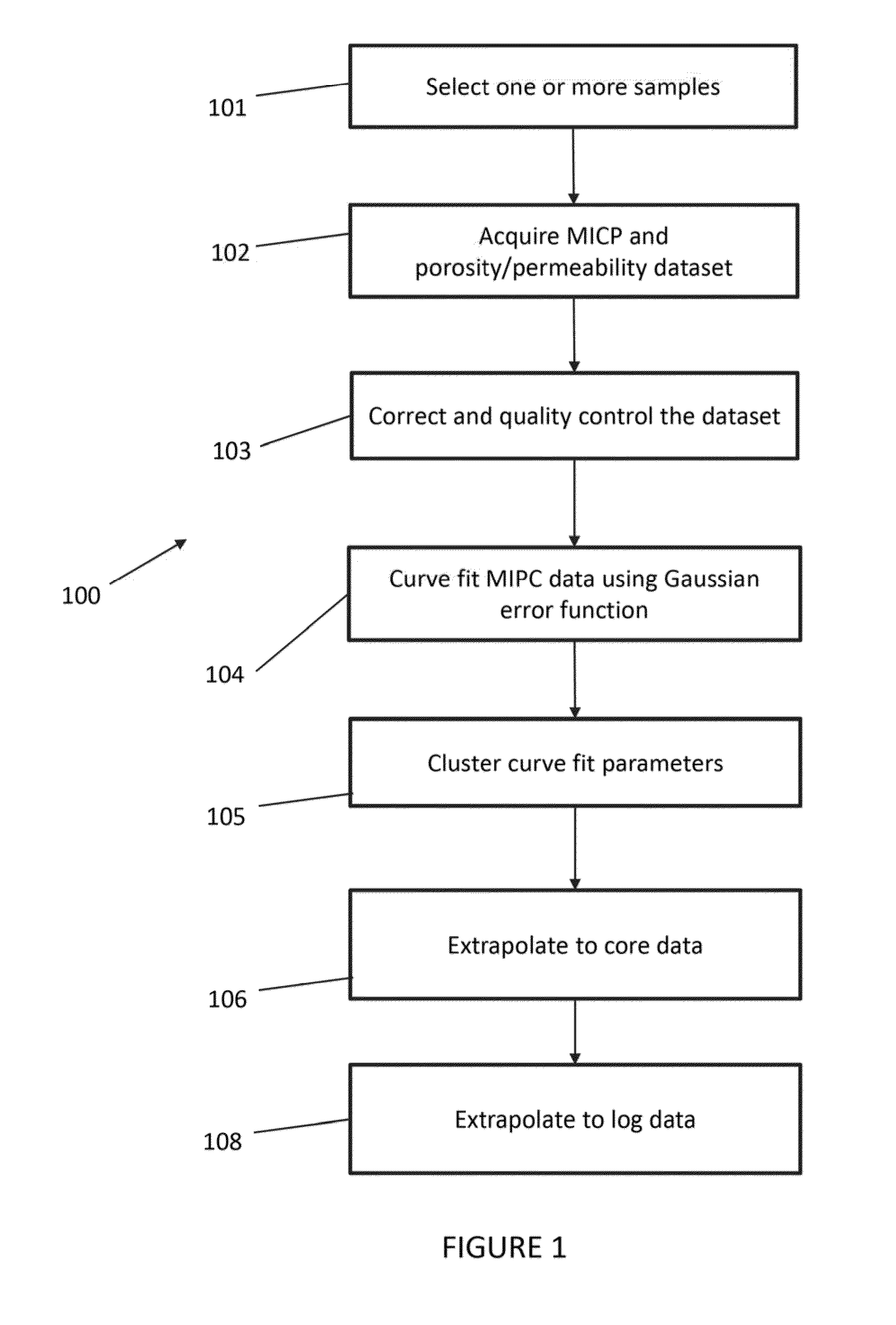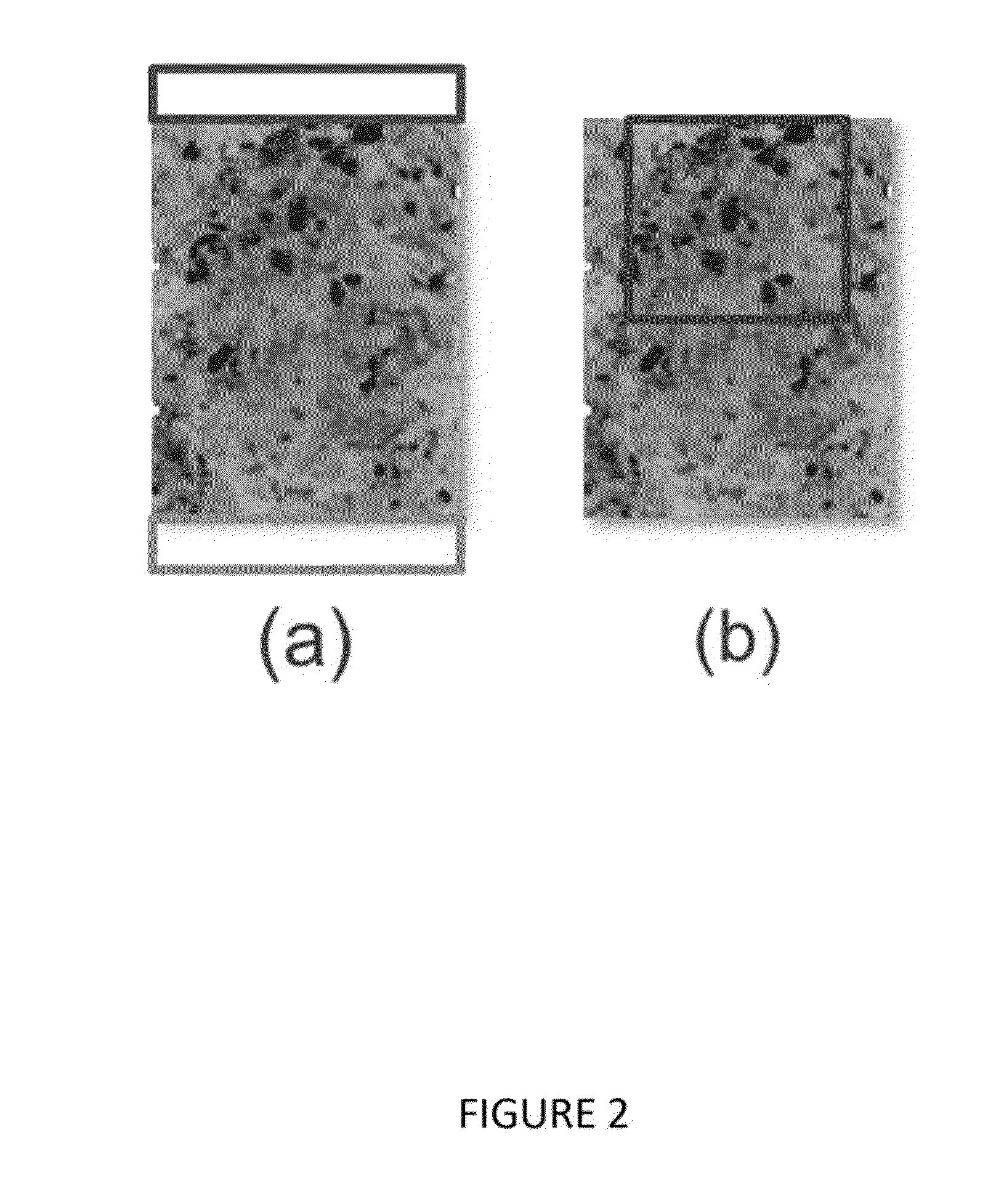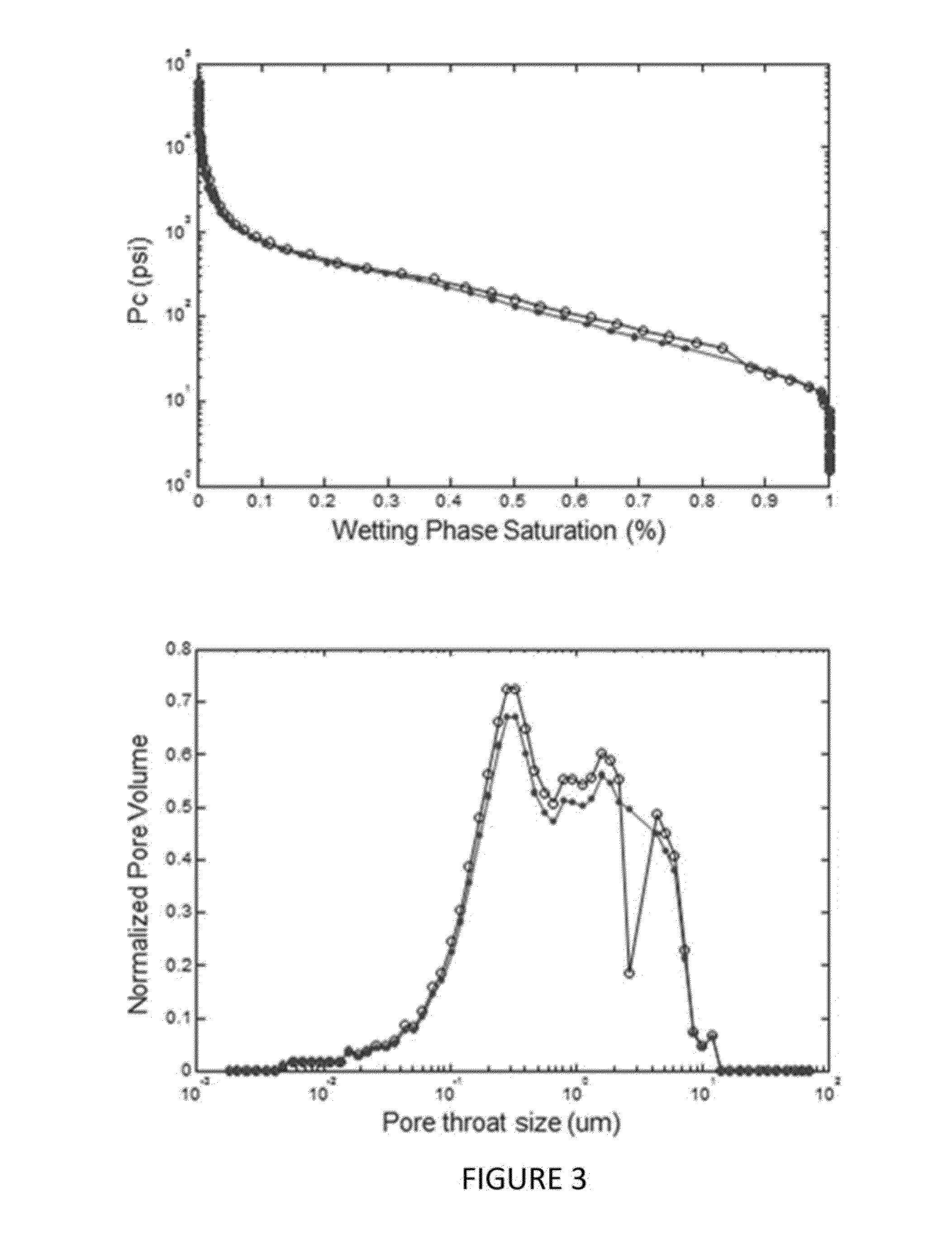System and Method of Pore Type Classification for Petrophysical Rock Typing
a pore type and pore type technology, applied in seismology for waterlogging, instruments, reradiation, etc., can solve the problems of disconnection between original depositional rock fabric and current reservoir properties, and the method has not yet been developed
- Summary
- Abstract
- Description
- Claims
- Application Information
AI Technical Summary
Benefits of technology
Problems solved by technology
Method used
Image
Examples
example
[0075]An embodiment of the disclosed methods was applied to an existing dataset from a field in West Texas and its outcome was validated using the available dynamic data.
[0076]An extensive database of 850 MICP measurements (plug trim offcut samples) from 62 wells were available as the basis for MICP pore typing in the West Texas field. After careful quality control 501 were accepted (59%) due to excess porosity difference greater than 3 porosity units or due to lack of a permeability measurement.
[0077]MICP measurements were characterized by fitting the multi-modal Gaussian function into each sample measurement. Clustering (and subsequent lumping) of the MICP parameters of the two pore sub-systems produced three main MICP-PTGs (FIG. 14)—PTG1 (highest porosity and dominated by macro-pores), PTG2 (bimodal pores), and PTG3 (low porosity and dominated by micro-pores).
[0078]It has been found that when analyzed by depositional rock type there was little separation in porosity-permeability ...
PUM
 Login to View More
Login to View More Abstract
Description
Claims
Application Information
 Login to View More
Login to View More - R&D
- Intellectual Property
- Life Sciences
- Materials
- Tech Scout
- Unparalleled Data Quality
- Higher Quality Content
- 60% Fewer Hallucinations
Browse by: Latest US Patents, China's latest patents, Technical Efficacy Thesaurus, Application Domain, Technology Topic, Popular Technical Reports.
© 2025 PatSnap. All rights reserved.Legal|Privacy policy|Modern Slavery Act Transparency Statement|Sitemap|About US| Contact US: help@patsnap.com



